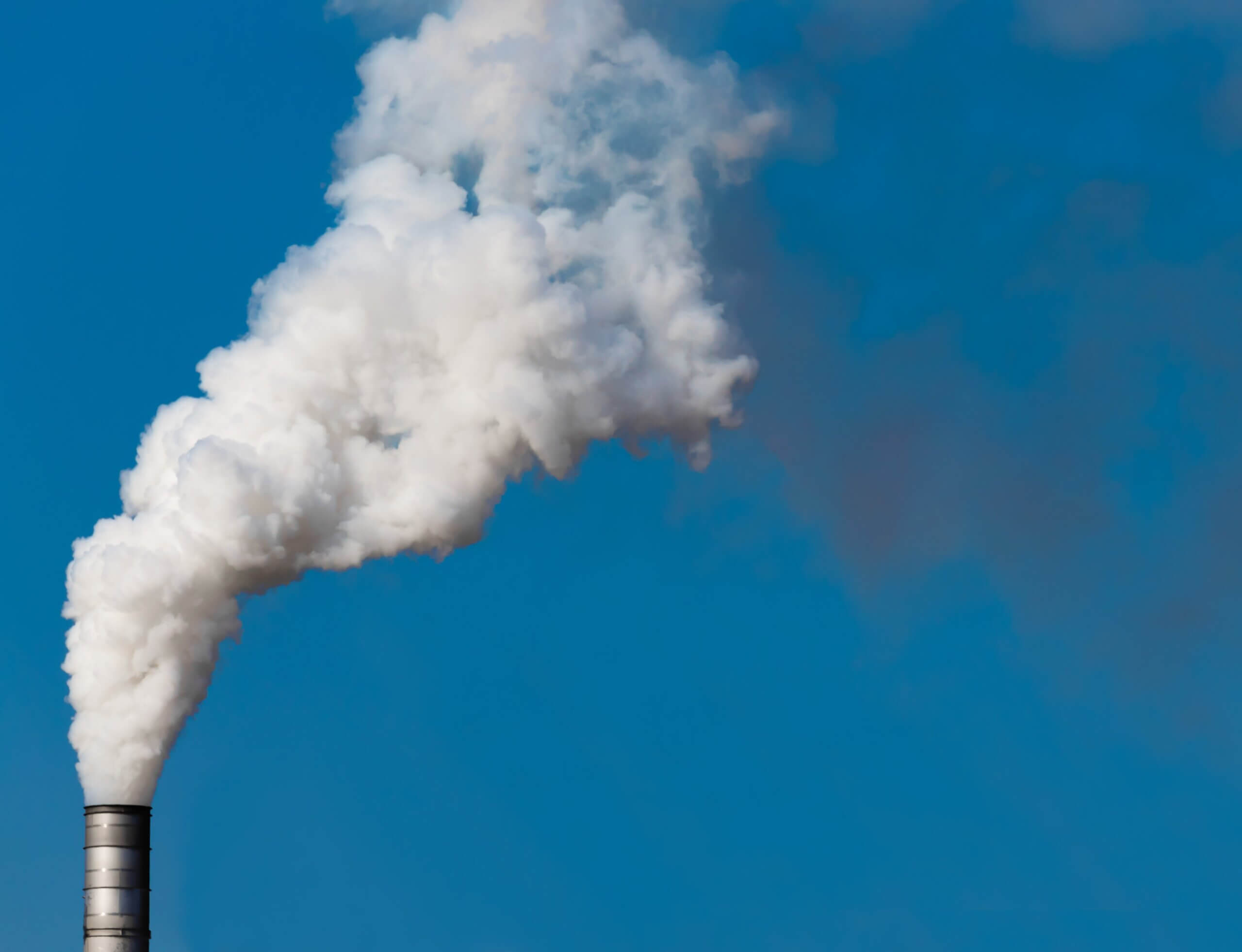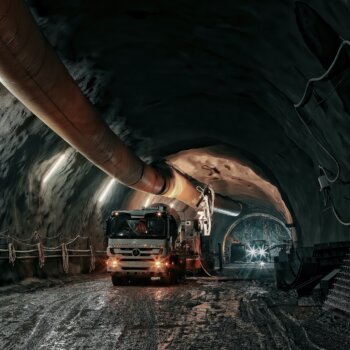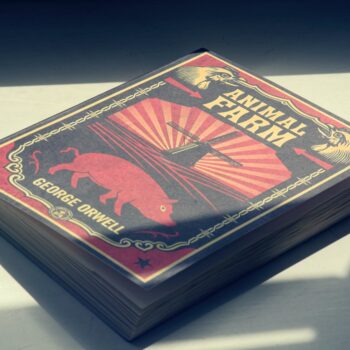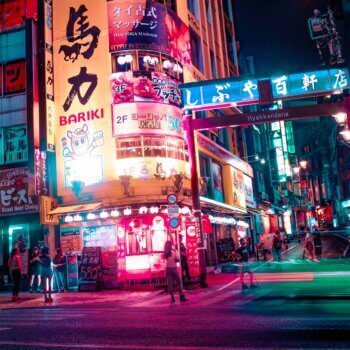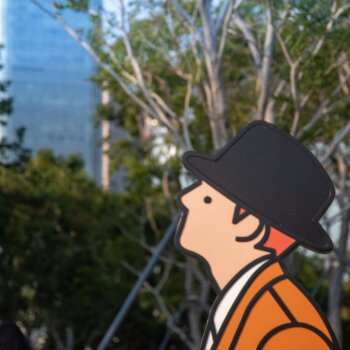Animals used to roam the planet. Now, they sit yoked and broken, until they’re ready to harvest for parts. We used to catch seasonal rainfall. Now, we empty the world’s aquifers to eat strawberries in February. We used to pray for ten fingers and toes. We increasingly purchase engineered outcomes. We used to dress for the season. Now we dress for the hour. We used to breathe fresh air. Now, we hide from it, lest it kill us. We used to live and die by the hand we were dealt. Now, we have a pill for everything. We used to eat foods Nature grew for us. Now we ingest biochemical ones that humans derived in a laboratory. We used to spend days and nights exploring the land. Now, we spend them lost in the Internet. We used to connect in the material world. Now we lob missives at one another in the digital one. We used to marvel at our world. Now we wage continual war against all of it.
Our oracles have warned us repeatedly, to no avail. They’ve filled books and movie screens with tales of our future: the one they feared and hoped to avert with their stories. And yet, paradoxically, we’ve turned their dystopic cries into roadmaps, navigating expertly toward the cliff edge, never pausing to consider what lies ahead, where the sidewalk ends.
Well, here we stand, staring into the abyss, eager to jump.
Water Water Everywhere, and Not a Drop to Drink
In Brave New World, Aldous Huxley warned us of a world in which babies were designed, grown and rolled out like so many Model Ts on an assembly line, each one engineered to fulfill a predetermined role, robbed of both parents and genetic material that could undermine or distract it. Those opting out of the grand plan were left outside the gates, to revert to their ape-like ancestry, in behavior and reach.
GATTACA, picking up where Huxley left off 65 years later, added expiry dates and causes of death to that programming. In Andrew Nichol’s vision, a newborn’s entire life was spelled out on paper and handed to the parents who would faithfully abide by its terms.
In 1982, Blade Runner foretold of cities where life unfolded under perpetual nightfall, and an unyielding rain bled from the skies as factories belched fire into the thick, smoke-charred air. In one scene, the tragic hero, Deckard, asks a replicant named Zhora — a member of a near-human race that has improved upon nature in almost every manner, and hides among us — if the python curled around her neck is real. “Of course it’s not real,” she spits back. “You think I’d be working in a place like this if I could afford a real snake?”
In Idiocracy, a cryogenically frozen, long forgotten “average Joe” awakens accidentally 500 years later, to discover he’s the smartest man left on an Earth robbed of reason and intellect, in which crops have all died, poisoned by a sports drink called Brawndo with which corporate interests have managed to replace water. “It’s got what plants crave: electrolytes,” goes their slogan. No one can figure out what went wrong.
In Children of Men, two decades of human infertility spells the end of the human race.
In The Matrix, machines called Harvesters grow towers of synthetically conceived humans whose bioelectrical energy is used to power the Machines. Blissfully asleep, they inhabit a shared dream — a neural-interactive virtual world called the Matrix — until they die of old age and are swapped out, like dead batteries.
In Ready Player One, inhabitants of an ugly world bereft of nature or societal norms — with nothing of substance left to offer its citizens — readily shed their physiological prisons for the psychological release of a fantasy world full of avatars and game-playing. In time, the virtual world of our collective imagination replaces the analog one that we have trashed of our own volition. It is so much less painful this way…
And Pixar’s WALL-E, an animated paean to all things wrong with our world, picks up where Brawndo left off. BnL (Buy n’ Large Corporation) now owns two million companies and governments, and its CEO, Shelby Forthright, is by default the world’s leader. In short order, he has suffocated the planet with trash, sending animals and plants to the dustbin of history, and sending the remaining humans into outer space on a vessel named the Axiom to escape Earth’s newfound toxicity. Stuck in the abyss for over a 500-year period and sustained by fast food and an army of robots that do everything a human once did, a cripplingly obese population that is literallyno longer able to support its own weight zips about on hovercraft, eyes fixated on screens that fill fields of vision and prevent inter-human discourse, all the while oblivious to the corporeal reality of their surroundings, bodies and fate.
Axiom, if you didn’t know, is Greek for “that which commends itself as evident”.
Indeed.
And yet: somehow — beyond all reason — we still think of our books and films as fictions.
They are not. They are our reality, here and now. And we, the guilty party, are in the process of daylighting or refining all of these things. Engineered babies. A world buried in its own trash. Animals that no longer exist outside of books, apart from those we now harvest in factories, to feed us. Air we can no longer breathe. Mothers who can no longer conceive. Families who will pay anything to cheat their genetic inheritance. A climate that attacks us with fire, toxins, storms, and plagues. Human beings who can no longer parse reality from fantasy; or stomach the psychological toll of our own creations. Bodies that can no longer function under paralyzing weight. And a population that dreams more than anything of a release from it all, in the form of a six-inch screen and meds… At least, those will do for now until our transformation is complete. Soon, the ubiquity of VR headsets worn on the street will feel as normal as our masks suddenly do, much as our earphones did, before them; while today’s insulin pumps will evolve to dispense a pharmacy’s bounty of feel-good substances, so that we can get through the day without succumbing to depression.
We will wear these things like jewelry.
We are a species begging for release from our world, and wrongdoings.
Well, we won’t have much longer to wait.
The Nth Degree
The ground on which we stand marks the final step for our species. Beyond, over the edge of the abyss, the Nth degree awaits us.
We are giddy with anticipation. And there is good reason.
Numbers now define our world. It’s not only the 1s and 0s that construct our increasingly digital lives. Though most of us are utterly clueless of just how effectively we’ve replaced everything real with everything man-made, we should, nonetheless, take the full measure of our own creation, by the numbers, before we leave the subject of our impact.
I’ve provided links in each stat for the intrepid.
In our time on Earth, we have destroyed:
- 98% of the wild animals
- 85% of global fish stocks (that’s 2 trillion creatures caught, per year)
- 33% of the world’s arable land in just 40 years (it takes 500 years to regenerate)
- 56% of the world’s aquifers (these take 20,000 years to refill)
- 46% of the world’s trees (at 15 billion culled, per year)
- 47% of global sea ice (or 9 trillion tons, since just 1961)
In all, we have decimated between one third and all of the planet’s fish, animals, soil, water, ice and trees — the things without which no human can live.
WALL-E may go down in history as the most prescient film ever made.
The United States’ animal diet, by the numbers, is a good way to tie up this section, because I have the data, and many people don’t know that 67% of the world’s terrestrial animals are now livestock (we comprise 32%, while the “wild” ones top up the final 1%). Each year, American agri-businesses kill, dissect and package 8 billion chickens, 225 million turkeys, 35 million cattle, 125 million pigs, 28 million ducks, 7 million sheep, 4 billion fish and 43 billion shellfish — shrimp, mostly.
In all, America culls 1,753 animals—per second.
Of this total, fully one quarter of “retail meat” — 26.2% — is discarded by stores and consumers, amounting to 14 billion annual dead animals that didn’t even have the pleasure of being eaten. Meaning, they were raised and killed for absolutely nothing.
Oops.
As Ralph Waldo Emerson put it 150 years ago in Fate, only the way a poet laureate could:
“You have just dined, and however scrupulously the slaughterhouse is concealed in the graceful distance of miles, there is complicity.”
Beyond the Nth Degree
The 8 billion-human question is, “What happens next?” What is the end state of the apocalypse? What happens when the lone remaining wild creature, the final chunk of ice, the last sip of groundwater or handful of topsoil, and the ultimate living tree are all gone?
I can tell you: the rest of nature dies with it, outside of what we can maintain artificially, which will fall decidedly short of an entire planet. Earth’s closed loop will collapse. So when 100% of the Earth’s surface — the oceans, forests and savannas—crater ecologically, they will more than passingly resemble Israel’s Dead Sea and Saudi Arabia’s Empty Quarter, respectively.
Both of these were our doing.
What happens when our trash completes its accelerating takeover of the oceans and waterways? When fresh air is but a legend, much like the idea of walking outside, mouth and nose unshielded, will soon be?
I can tell you: we will purchase desalinated water and oxygen tanks and carry them with us, just as some of us guzzle plastic containers of spring water today. And in doing so, we will accelerate and exacerbate the waste stream.
And what happens when most of those who die annually — not just the third who do so, today — will succumb to what they have eaten? Fully 32% of all annual deaths, due to hypertension, heart disease, strokes, dementia, diabetes and cancer — are dietary.
I can tell you: our acutely diseased and inflamed bodies will be engaged in a perennial struggle to survive our dietary onslaught, while we, no longer able to move without robotic assistance, let alone to find real foods to repair us, will be kept alive by machines and drugs, not unlike the sickest among us are, today.
What happens when all of human history is relegated to stories unfamiliar to any living creature — mere tales that we share with one another’s avatars in a digital simulacrum of the world we destroyed? When none of us works any longer, and we are all, finally, utterly “useless”? When all that consumes us is digital fantasy — a world we hunger to play in, unlike the material one we have ravaged and no longer wish to remember? When we are free to follow our mind’s fancies, rather than struggle with physical reality? What happens when our minds are plugged into a central, integrated server — ferociously unleashing our ids far more effectively than today’s social media, where we are all mouth and no ears; all theory and no fact? What happens when individuality itself is a hangover from our corporeal days as beings of nature, before we merged into the Singularity?
Impossible? Or this decade?
I can tell you.
The Nth degree is upon us, in nearly every system we have inherited, and transformed. We have pushed our flora, fauna and climate all to the very edge of the abyss. Not one of them is healthy; but all are on a very real course toward permanent collapse. Most of this damage has been done within the past half-century alone; some, in less than that. And we have become ever-more ruthlessly efficient in our reach, and speed.
How much longer do you think it’ll take before the final blow is dealt?
In other good news, it’s not “just” those things. Humans, too, have pushed one another to a degree of sickness our ancestors would scarcely recognize. Our minds and bodies are degrading at alarming rates, and our socio-economic systems conspire to further weaken those who play within them. The end game for these things is no different than for the non-human systems — flora, fauna and climate — with which we still share the Earth, and on which we still partially depend not to perish.
Every decision we make related to farming, energy generation, polluting, interacting, thinking and working has become — somehow; recently — critical. That is, none of what we do is benign any longer; all of it risks edging our toes over the abyss.
Either those who inherit our mess will rise to where we wouldn’t and begin the Herculean job of repairing the Earth, while developing new ways to continue living on a half-dead, yet slowly healing shell; or the damage will prove too great to do anything but complete the job, turning the page on what we inherited, and completing our dystopian simulacrum, borne of visions not unlike our oracles’ nightmares.
We have taken this planet and everything on it to the Nth degree — as much or as far as is possible.
Tread carefully.
